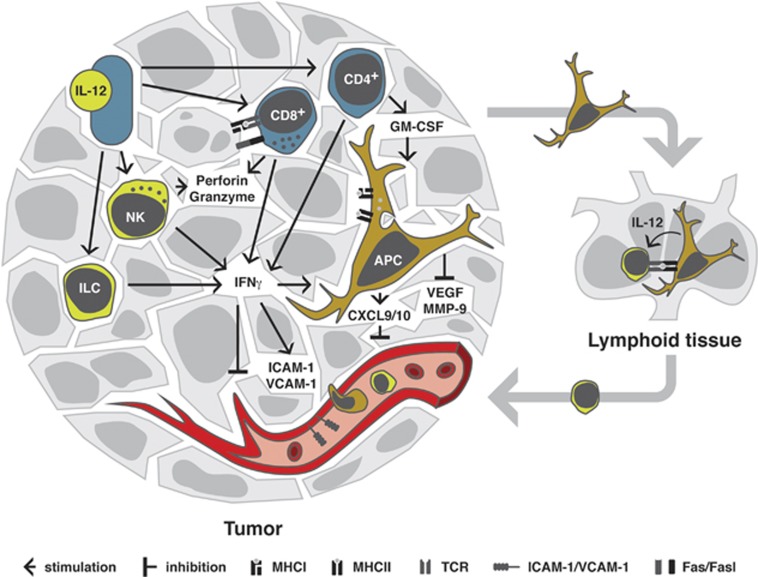Figure 1.
Cellular responses to IL-12 stimulation in the tumor tissue. IL-12 acts mainly on lymphoid cells such as NK cells, T cells and ILCs. All of these subsets increase their IFN-γ secretion upon stimulation and thereby induce most of the tumor-suppressing pathways observed upon IL-12 treatment. Furthermore, IL-12 and IFN-γ potentiate cytotoxic responses by NK cells and CD8 T cells (CD8+), involving the production of perforin, granzyme and Fas ligand (Fasl). The secreted IFN-γ is involved in direct tumor vascular responses such as ICAM-1 and VCAM-1 upregulation and inhibition of angiogenesis. The adhesion molecule upregulation is thought to facilitate leukocyte recruitment to the tumor tissue. Moreover, IFN-γ stimulates myeloid cells, which induce the secretion of CXCL9 and CXCL10 and suppress the production of VEGF and MMP-9, yielding in the inhibition of angiogenesis. Moreover, IL-12 stimulates antigen presentation and cross-presentation by APCs and thereby further promotes the cytotoxic activity of CD8 T cells and cytokine response of CD4 T cells. Helper T cell-derived GM-CSF upon IL-12 stimulation has also been shown to mediate the tumor suppressive effect. DC, dendritic cell; MØ, macrophage; NP, neutrophil granulocyte

